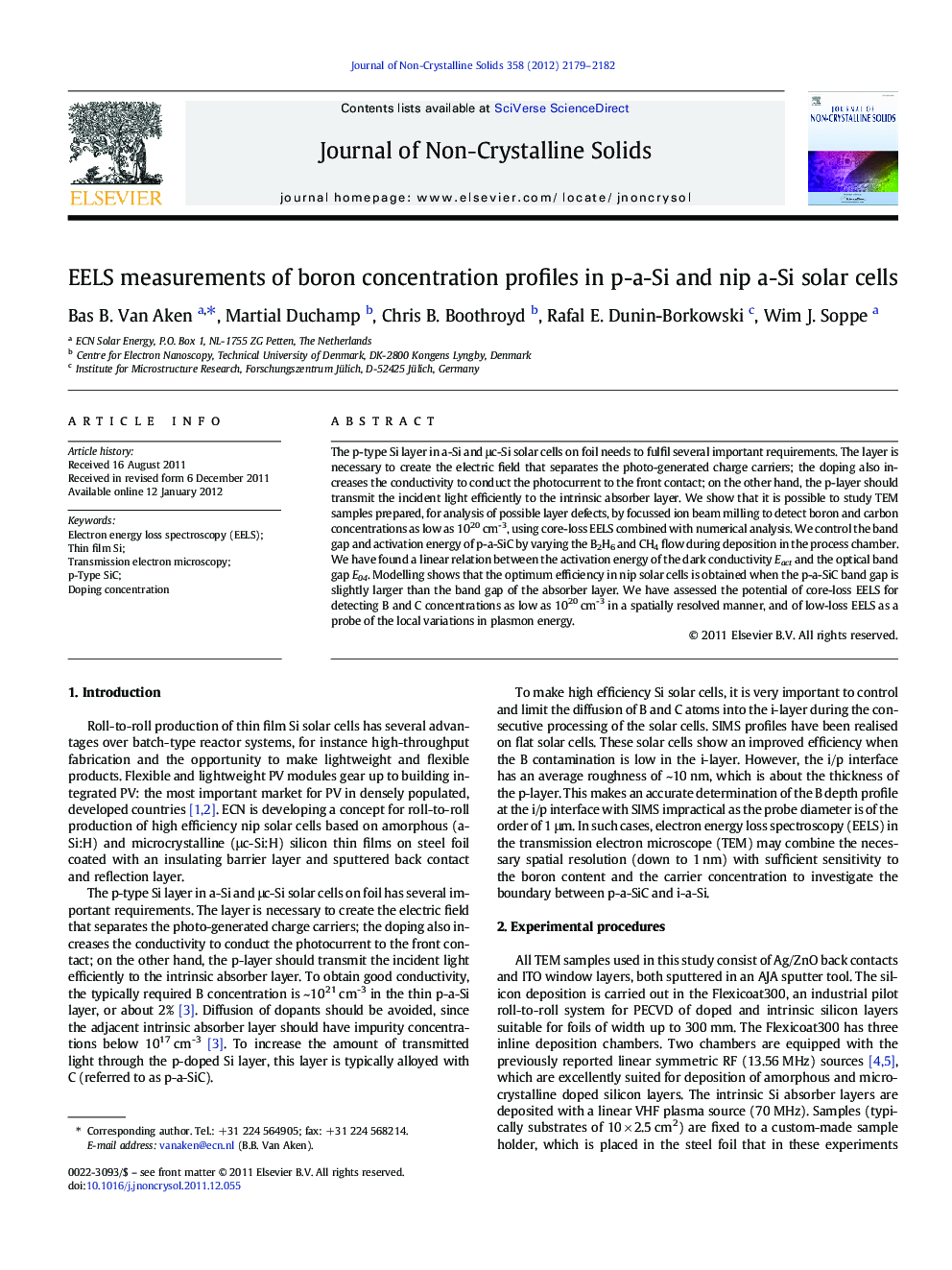| Article ID | Journal | Published Year | Pages | File Type |
|---|---|---|---|---|
| 1481696 | Journal of Non-Crystalline Solids | 2012 | 4 Pages |
The p-type Si layer in a-Si and μc-Si solar cells on foil needs to fulfil several important requirements. The layer is necessary to create the electric field that separates the photo-generated charge carriers; the doping also increases the conductivity to conduct the photocurrent to the front contact; on the other hand, the p-layer should transmit the incident light efficiently to the intrinsic absorber layer. We show that it is possible to study TEM samples prepared, for analysis of possible layer defects, by focussed ion beam milling to detect boron and carbon concentrations as low as 1020 cm-3, using core-loss EELS combined with numerical analysis. We control the band gap and activation energy of p-a-SiC by varying the B2H6 and CH4 flow during deposition in the process chamber. We have found a linear relation between the activation energy of the dark conductivity Eact and the optical band gap E04. Modelling shows that the optimum efficiency in nip solar cells is obtained when the p-a-SiC band gap is slightly larger than the band gap of the absorber layer. We have assessed the potential of core-loss EELS for detecting B and C concentrations as low as 1020 cm-3 in a spatially resolved manner, and of low-loss EELS as a probe of the local variations in plasmon energy.
► Linear relation between Eact and E04 in p-a-SiC. ► B-concentration profile by EELS in nip a-Si solar cell. ► SIMS and EELS in good agreement. ► EELS has 5 nm resolution, better for rough interfaces. ► Low-loss EELS shows relation between plasmon energy and dopant level.
